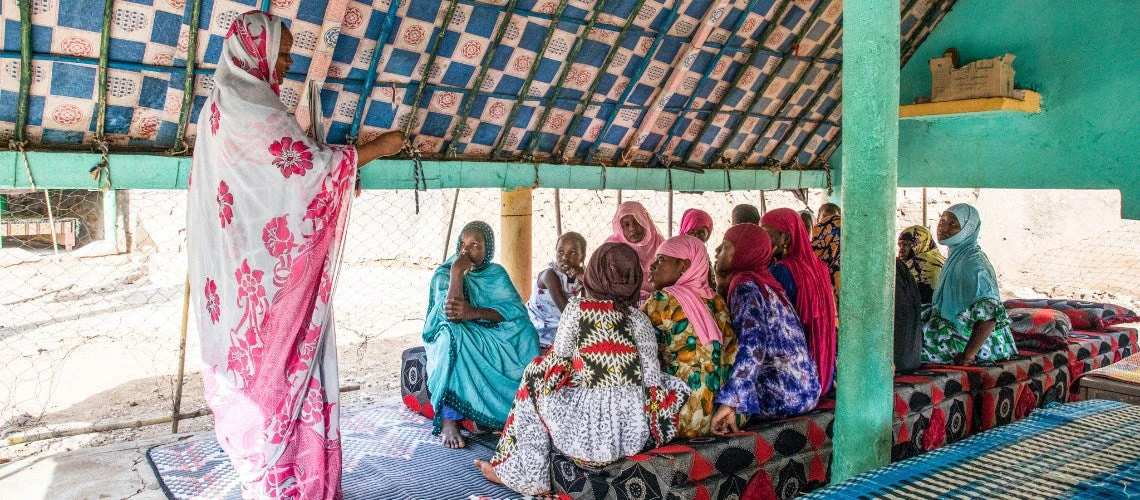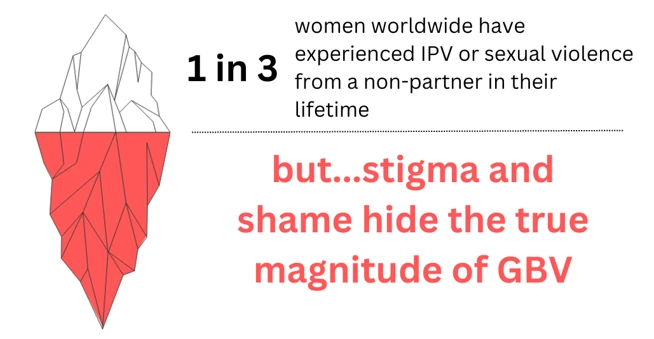 A new thematic note on gender-based violence examines global evidence to draw lessons on what works to address GBV. Copyright: Vincent Tremeau/World Bank
A new thematic note on gender-based violence examines global evidence to draw lessons on what works to address GBV. Copyright: Vincent Tremeau/World Bank
The latest studies from the World Health Organization estimate that one in three women have intimate partner violence or sexual violence from a non-partner perpetrated against them in their lifetime. Early marriage and female genital mutilation – forms of gender-based violence (GBV) particularly relevant for girls—continue to be rampant: nearly 12 million girls are married early each year and at least 200 million girls and women are subjected to harmful practices.
These figures can be significantly higher considering how stigma and shame silence women and girls, preventing them from disclosing violence and seeking help. Moreover, the compounding effects of increasing conflict and climate change worldwide disproportionately affect women and girls, exacerbating their fragility and exposure to violence.
Gender-based violence is a threat to sustainable development
Gender-based violence and inaction against it translate into substantial costs for economies and societies as a whole. Violence disrupts the human capital accumulation of survivors and families, restricts mobility, choices and options for education and employment, and reduces productivity in the workplace.
The economic consequences of gender-based violence are also evident from existing literature: An IMF study finds that a 1 percentage point increase in the share of women subjected to violence can reduce economic productivity by up to 8.7 percent in Sub-Saharan Africa. In the United States, the Centers for Disease Control and Prevention estimates costs of intimate partner rape, physical assault, and stalking exceed $5.8 billion each year. Preventing all forms of gender-based violence is critical to the economic growth of nations.
Existing evidence helps point to effective interventions, but evidence generation needs to continue
In the newly published thematic note on gender-based violence, we examined systematic reviews of global evidence to draw lessons on what works to address GBV. The interactive figure below presents which solutions are considered effective, emerging and less promising in preventing and responding to gender-based violence.
Please hover over each intervention to see the results of evaluations. You can access these studies by clicking the box.
Source: The information in this chart is based on the following literature: A rigorous global review of interventions to prevent violence against women and girls (Kerr-Wilson et al. 2020); Prevention of violence against women and girls: what does the evidence say? (Ellsberg et al. 2015); RESPECT framework strategy summary (WHO/UNWOMEN 2020); and Gender Equality & Development – Interventions to prevent or reduce violence against women and girls: a systematic review of reviews (Arango et al. 2014).
Ending gender-based violence requires a multi-sectoral approach with a sustained commitment
A compelling and growing body of evidence suggests that gender-based violence is preventable. Evidence also demonstrates that ending gender-based violence demands action across sectors and includes men and women of different ages and backgrounds. This multi-sectoral approach, combined with a longer-term vision and commitment - rather than a one-off activity - is an essential factor in leading to impactful change towards preventing gender-based violence. Finally, it is critical that we build on the existing evidence base: although there are emerging approaches that hold potential, there is an ongoing need to continue to adapt and pilot test approaches to expand the evidence-base in various contexts including in fragile and conflict settings where GBV is exacerbated.
Collective action can “move the needle”
In line with the guiding vision presented in Gender-Based Violence Prevention and Response in World Bank Operations: Taking Stock After a Decade of Engagement, it is vital to understand that preventing and responding to gender-based violence is essential for reaching development goals and creating an inclusive and resilient society. With this shared understanding, countries and organizations can make intentional, multi-sectoral investments to address this universal challenge. It is time for increased commitment and action to end gender-based violence. Collective action across actors—within communities, civil society organizations, governments, development agencies, the private sector, research institutions and multilateral development banks—is the most promising way forward for lasting impact.
Increasing investment in women and girls, alongside increased investment in intentional evidence-based programming to prevent and respond to violence against women and girls will allow women to develop freely to reach their full potential. Violence is preventable, and everyone, especially governments, has a role to play. Investments cannot be one off—they must become part of the DNA of institutions. With investment in addressing GBV we will achieve more sustainable development and a safer and better place to live as a woman or girl.
To receive weekly articles, sign-up here






Join the Conversation